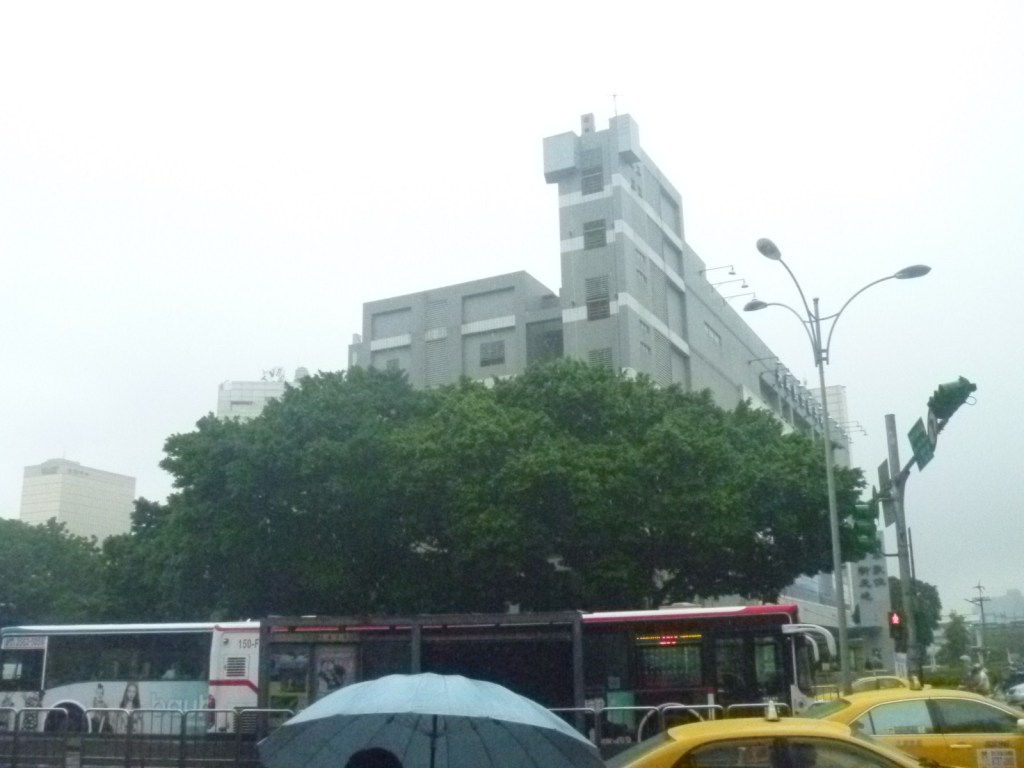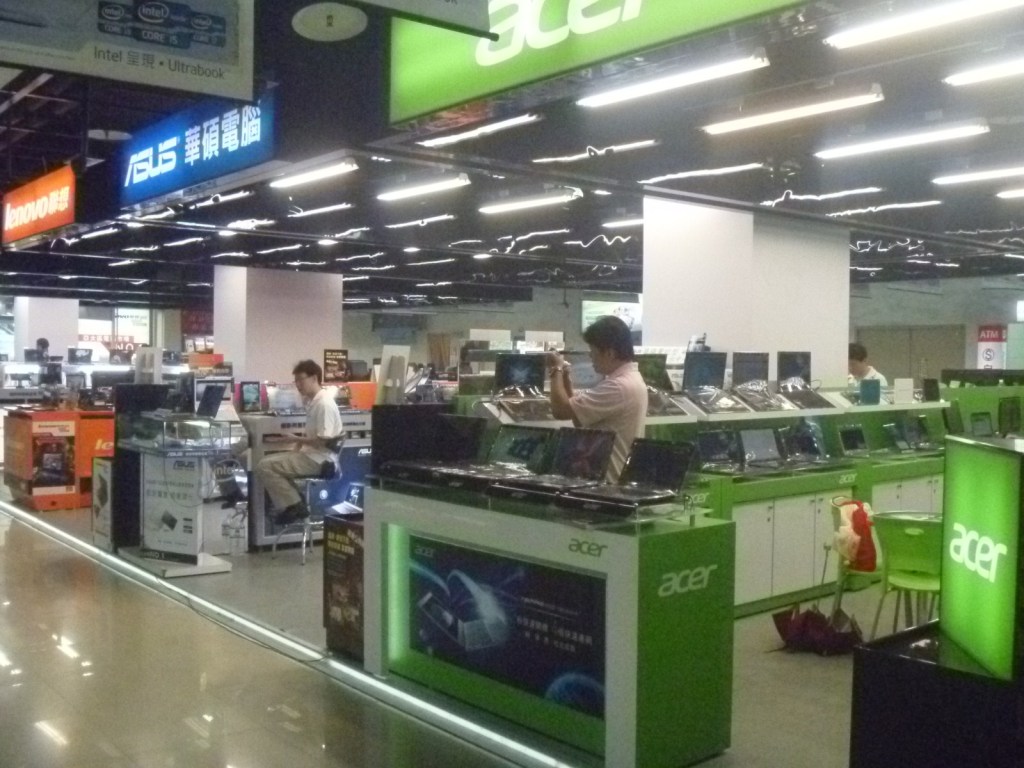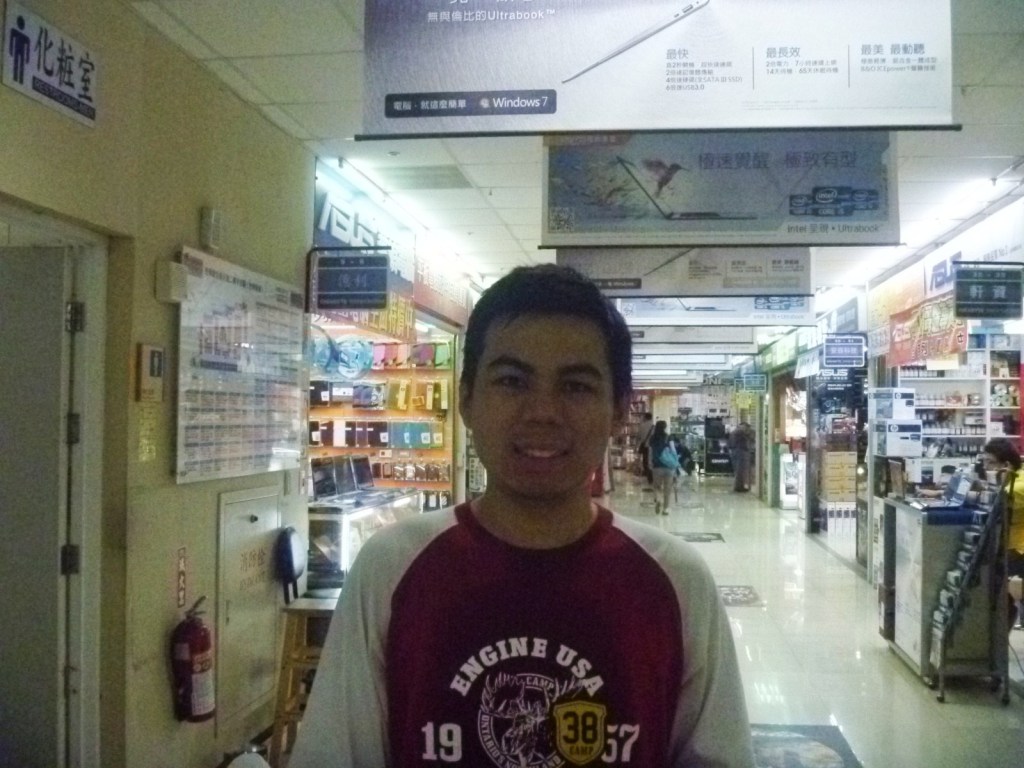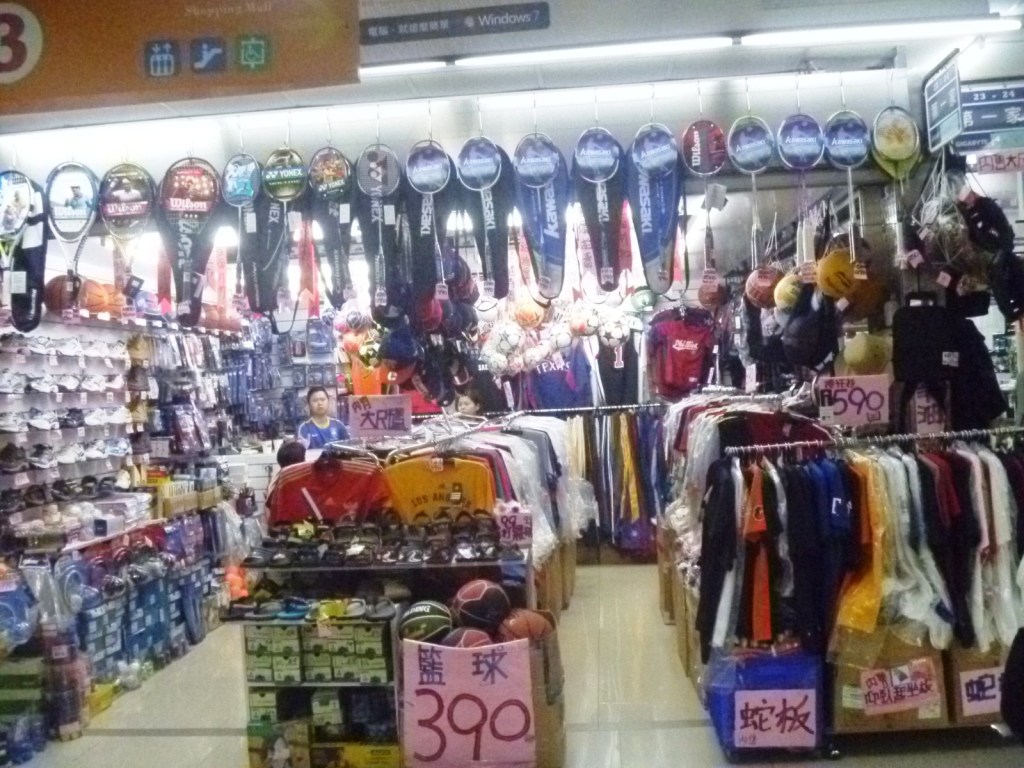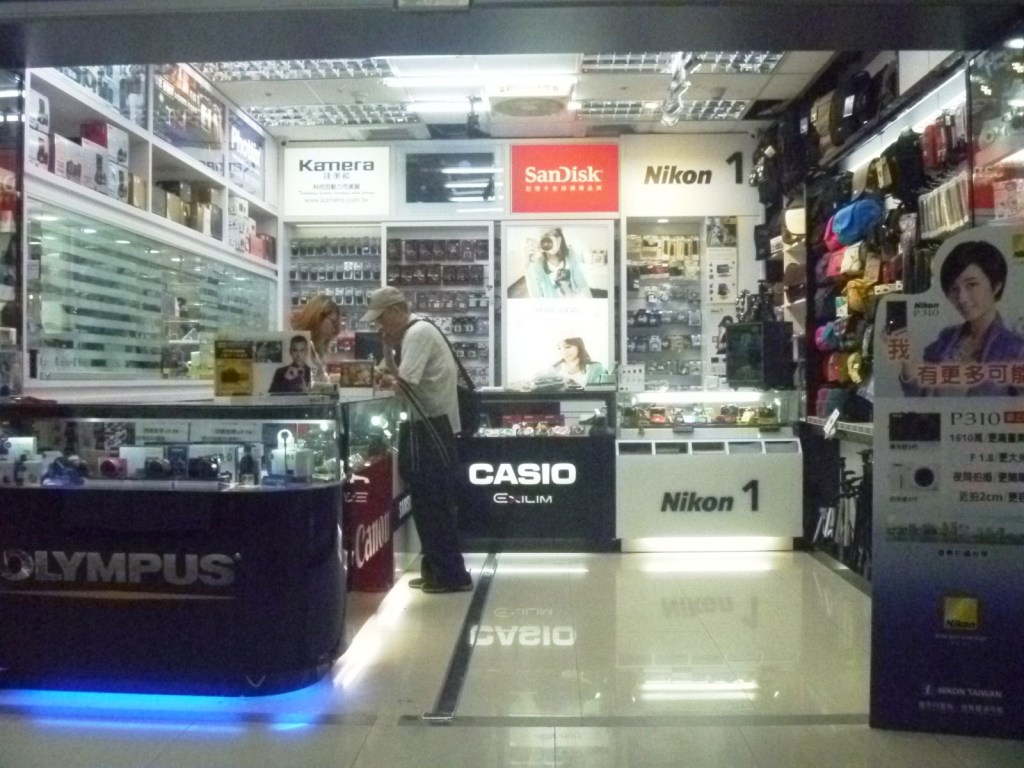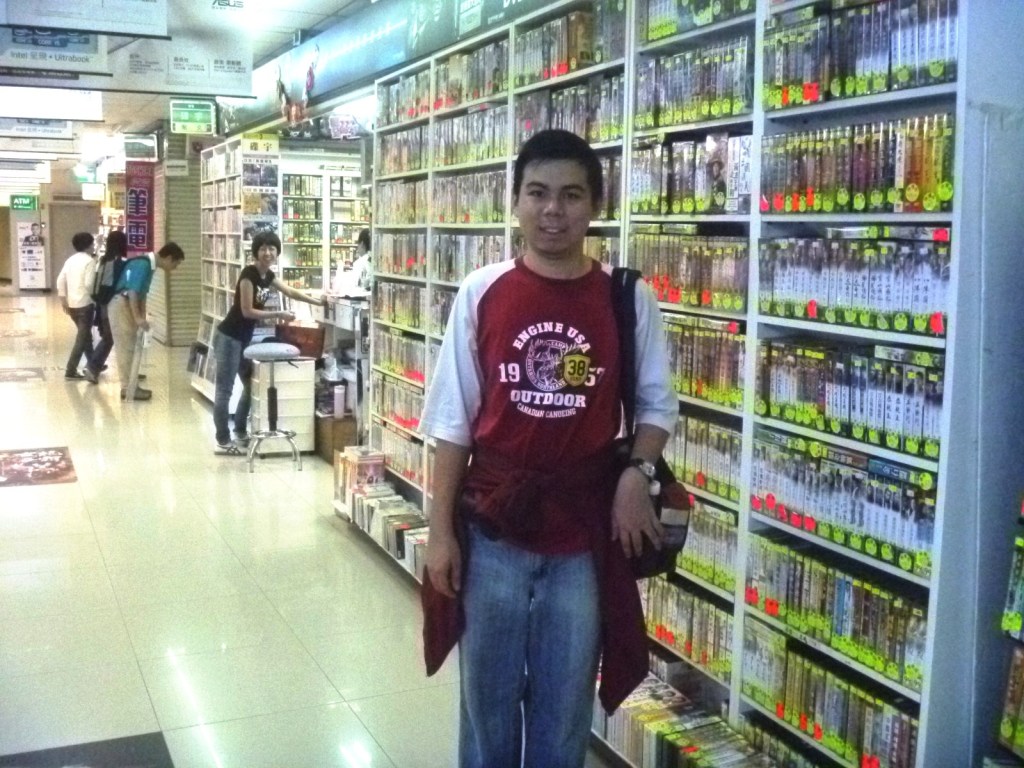It was raining when we woke up on the third day of our stay in Taipei. It seems the city was also feeling the effects of Typhoon Ambo (international name: Mawar) which struck the Philippines. Not really a good day for sightseeing much less photography. Instead, I decided to just check out the Guang Hua Digital Plaza, just south of Song Jiang Rd.. After breakfast at the hotel, Jandy and I donned our jackets and opted to just walk to the mall. Along the way, we searched for, but did not find, the Miniatures Museum along Jianguo North Rd..
Guang Hua Digital Plaza ( also known as the“Taipei Akihabara”), attracting tens of thousands of visitors each day, is an indoor, technological and electronics one-stop shopping paradise located at the intersection of the Zhongzheng and Daan Districts. It was established in 1973 as a retailer market, originally using the space beneath the old Guanghua Bridge and just specializing in old books (thus the nickname “old books street”). Within a decade, however, electronics retailers gained presence in the market and surrounding streets.
Due to underground railroad construction in 1992, Guang Hua Market was moved to an underground location at the corner of Bade Rd. and Xinsheng South Rd.. By this time, the area became known for electronics, with many new stores opening, and the establishment of other electronic markets such as the International Electronics Market, Contemporary Life Market and Sanpu Market.
In 2006, due to the demolition of the Guanghua Bridge, Guang Hua Market was moved to a temporary location at the corner of Jinshan North Rd. and Civic Blvd.. The temporary building consisted of 5 warehouse-like halls, providing a total of 196 retail stores. Not soon after the market moved into its temporary location, construction began on the current six-story Guang Hua Digital Plaza building, which has been its current location since July 2008.
Today, the purpose-built Guang Hua Digital Plaza building consists of 6 floors and a basement. The first floor houses an exhibition space for new electronic products and a food court. The second and third floors are the new locations for the 196 vendors of the original Guang Hua Market while the fourth and fifth floors are the new locations for the vendors of Xining Guozhai Electronics Market. The sixth floor is reserved for repair shops, education classes and offices while the basement floor is for parking.
Even with the rain outside, the building was pulsating with a steady stream of IT gadget lovers fervently shopping for the latest desktop computers, laptops, digital cameras, mobile phones, electronic accessories and parts and related gadgets and peripherals, many of which are Taiwan-made, at this sprawling mess of shops selling everything electronic. There’s also a lone sporting goods store and stores selling VCDs and DVDs (mostly Taiwanese or Chinese titles).
However, checking out their prices, they still can’t match prices in Hong Kong but they could compete with European and U.S. prices. My problem here, especially when you need to techno-speak, was that most of the vendors don’t speak or only speak a little English. The foreign tourists I saw shopping here were accompanied by their English-speaking guides. I had no such luxury. Oh well, maybe next time. We returned to the Gala Hotel the same way we came to Guang Hua – by walking. We made a stopover at a MacDonald’s outlet for a take-out lunch of burgers then backtracked to our hotel.
Guang Hua Digital Plaza: 8 Civic Blvd., Section 3 (between Jinshan and Xinsheng Rds.), Taipei City, Taiwan. Tel: (+886-2) 2391-7105 and (+886-2) 2341-2202. Open daily, 10 AM-9 PM (closed on the second and fourth Tuesday of each month). Website:www.guanghuamall.com.tw.
How to Get There: take the Bannan Line to Zhongxiao Xinsheng Station, Gate G1, and then walk for around 10-15 mins.

